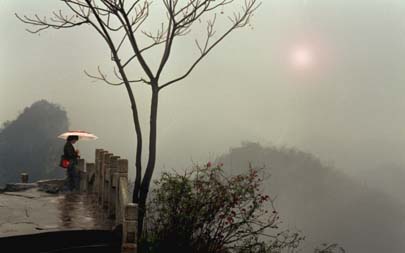

Unit 4 Unit 4

Literature of the NonWestern World
 |

Unit 4 Unit 4 |
 Literature of the NonWestern World |
| Introduction | .Explication | Questions | Review |
Review:
You just read some of the best poetry written
in China.
You should try to remember the 4 greatest poets
& their outlooks:
T'ao Ch'ien & Li Po as Daoists celebrating
the image of the recluse;
Tu Fu as Confucian illustrating how barbaric
behavior (war) destroys family & agricultural life.
Li Ch'ing-Chao as Buddhist. Her work especially
illustrates the Buddhist notion of dukkha.
These are not inviolable categories. Li Po's "Yearing" for example is more Buddhist than Daoist; his in "The Sun Rises & Sets": "The rise & the ending of all things/ is just the way things are" also expresses a Buddhist outlook.
By now you should have some feeling for, or understanding of, the three religious, philosophical or cultural outlooks of China: Confucian ethics, Daoist aesthetics, & Buddhist psychology. None of these is exclusive, in the way, e.g., that being a Baptist excludes also being a Muslim or even a Catholic. These 3 outlooks have a rough correspondence to age. The freedom to "follow the inclinations of the heart" is, for most people, only available in early childhood & in retirement. The middle years of adulthood are ruled by Confucian ethics, which is inescapable in China & Japan. To be employed, to be married, or to have any other social identity, you have to live up to expectations codified in Confucian ethics. Buddhism is largely viewed as a funeral culture that prepares one for the next world & that takes care of dead ancestors through ritual means.
On the other hand, as the poets illustrate, any one of these cultures can become an engrossing concern that colors or influences every area of one's life. We cannot imagine Li Ch'ing-Chao as a Confucian Mandarin. Neither can we imagine Tu Fu as a Daoist hermit without family or duty.
This is the end of unit 4. Next week you
will work through unit 5, which will begin our study of Hindu culture.
See you then.